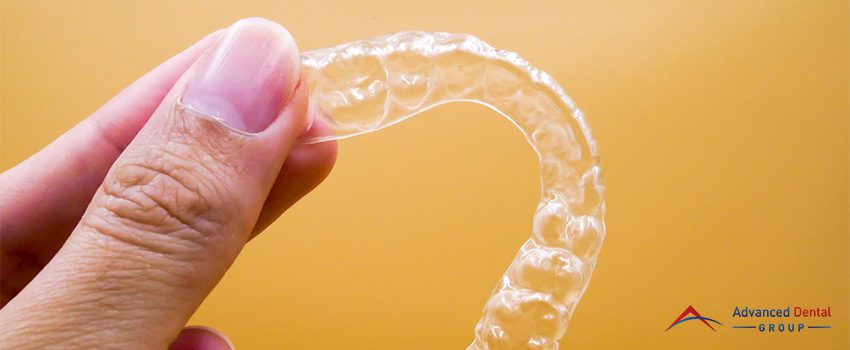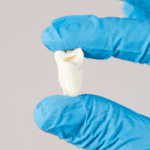Back then, people had to wear conventional metal braces to correct overbite, underbite, crossbite, open bite, crooked, gapped, and crowded teeth. Thanks to Kelsey Worth and Zia Chishti — Stanford University students who invented the first clear aligner system called Invisalign in 1997 — people nowadays have a more comfortable and discreet way of correcting such dental problems.
Since Invisalign treatment offers a comfortable way of correcting teeth problems, if you are considering this treatment, here’s everything you need to know.
What Is Invisalign?
Invisalign treatment is an orthodontic treatment that doesn’t involve the use of metal braces in correcting different teeth problems. It is a series of custom-made clear aligners designed to cover and pull the teeth into their proper position. These aligners are made of a patented thermoplastic material, and although they are clear and colorless, they are not completely invisible.
If you are asking the question, “How do I know if Invisalign is right for me?” The answer depends on many factors, including your condition and your dentist’s advice. Additionally, you have to know what’s involved in wearing these aligners. To give you an overview, here are some essential pieces of information:
- The first step in Invisalign treatment involves an orthodontic visit. This is when orthodontists assess the condition of teeth and create a 3D image of the jaw and mouth, which they will use to create a customized treatment plan.
- Next, orthodontists use the image to create a series of clear aligners. This set of aligners are designed to apply pressure to teeth, gradually moving them into their proper place.
- Once the aligners are ready, you’ll be asked to wear them for 20 to 22 hours a day. Depending on your condition, orthodontists will give advice on when to switch out aligners for a new set. Usually, this takes about one to two weeks.
How Effective Are These Clear Aligners?
Although more research is still needed to prove its effectiveness, many people have already gotten beneficial results from wearing Invisalign.
According to a 2017 study titled “Clear Aligners in Orthodontic Treatment,” Invisalign works better compared to other types of clear aligners available today. Additionally, the newer versions of it — the ones manufactured in 2010 onward — are proven to have enhanced effectiveness due to the improvement made in the delivery of pressure.
Is Invisalign Right for You?
While a visit to your orthodontist will likely tell you whether Invisalign is the best treatment, consider asking yourself the following questions first:
1. What is the condition of your teeth?
Clear aligners are not an appropriate treatment option for correcting severe dental conditions. They are only for mild to moderate conditions of overcrowding, misalignment, and gaps. If your condition involves having a dramatic overbite, crossbite, or underbite, you may want to opt for the traditional treatment options for more beneficial outcomes. However, if you feel that your condition falls in the mild classification, seek advice from an expert to determine whether you’re a good candidate for the treatment.
2. How old are you?
Anyone below the age of 12 is not a good candidate for this treatment. Children’s teeth and jaws are still in the development process, which makes it hard for orthodontists to create a customized treatment plan based on initial assessments. Although this treatment is perfect for teens and adults, ten-year-old kids with the majority of their permanent teeth can already wear clear aligners.
3. Are you committed enough?
Invisalign aligners should be worn at least 20 to 22 hours a day. This is to achieve the desired results within the expected treatment timeframe. They can only be removed when eating, brushing, and flossing. If you think you can commit to that, then this treatment option might be for you.
You also have to note that the treatment doesn’t end once your teeth are already in their proper places. Orthodontists may still ask you to wear retainers to ensure that the results won’t be reversed. Additionally, you have to commit to follow-up visits.
4. Is it within your budget?
You also have to consider your budget when opting for this treatment as it costs more compared to traditional braces. The cost of Invisalign ranges from $3000 to $9000, depending on your dental condition. You may be able to pay some parts of the total cost of the treatment while the rest is covered by your insurance company. If you are financing the total cost, you can look for orthodontists that work with third-party lenders — some of these provide low-interest financing to help you pay at a rate that fits your budget.
Pros and Cons of Invisalign Treatment
Here are some reasons why people opt for Invisalign instead of the traditional metal braces:
- Aesthetic Factor – One of the main reasons why many people choose this treatment is because clear aligners are less noticeable compared to metal braces with brackets and wires.
- Convenience – Another reason is the convenience that clear aligners bring. You can easily remove them if you feel the need to, making brushing and flossing hassle-free. You also don’t have to worry about dealing with broken brackets and wires.
Meanwhile, here are some of the reasons why some people don’t choose Invisalign:
- Less Effectivity – This treatment is only limited to mild and moderate dental problems. If used as a treatment for severe dental conditions, it might not produce any beneficial outcome at all.
How Advanced Dental Group Can Help
We at Advanced Dental Group have partnered with dentists and dental experts from different areas of the United States. If you are planning to undergo Invisalign treatment, we can connect you to the best dentists in your area. If you have any inquiries or questions, feel free to reach out to us. Call us today to schedule your appointment.





